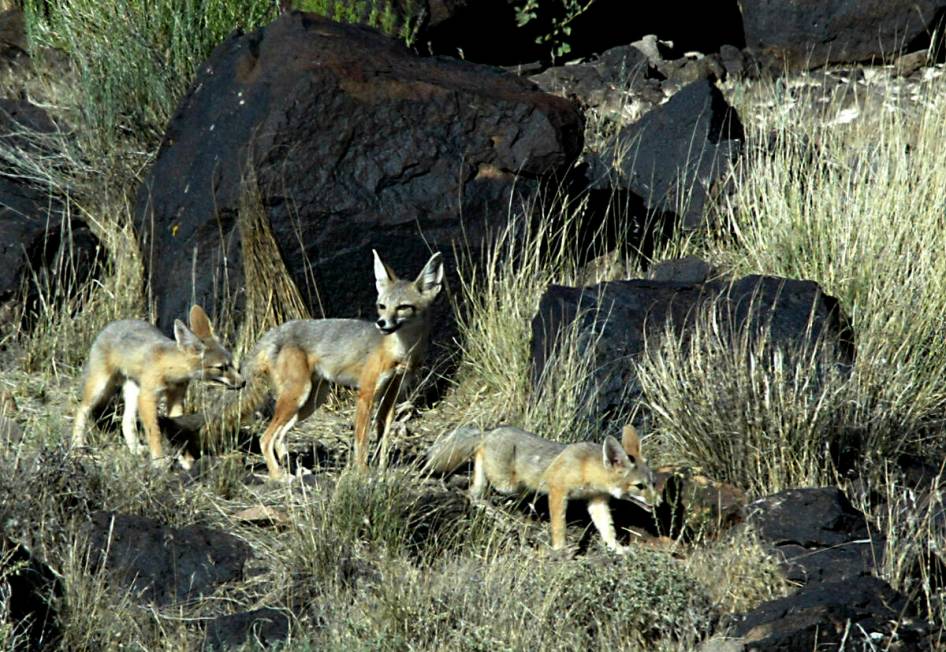This furry desert creature is Nevada State Parks’ new mascot

Move over, Mojave Max — there’s a new animal mascot in the Silver State: Carson Kit Fox.
Nevada State Parks has chosen Carson to be its furry friend that rangers hope will encourage more visitation in Nevada’s 27 state parks.
“From the soaring peaks of Cave Lake to the tranquil waters of Spooner Lake, I can’t wait to help people discover all the wonders our parks have to offer,” Carson Kit Fox said in an announcement from the agency. “I’m here to make sure every visit is fun, memorable, and full of adventure!”
Southern Nevada is home to a handful of popular state parks, including Valley of Fire, Big Bend of the Colorado, Ice Age Fossils, the Old Las Vegas Mormon Fort and Spring Mountain Ranch.
These wild animals may elicit some fawning from passersby, but kit foxes are sturdy animals that thrive in the harsh heat of the Mojave Desert. Here are some facts you may not know about these unassuming members of the dog family:
Habitat is dwindling
The International Union for Conservation of Nature considers kit foxes to be of “least concern,” meaning that they are not endangered and have a low risk of extinction.
However, one subspecies in California called the San Joaquin kit fox was listed as an endangered species under the Endangered Species Act in 1967. Agricultural development and soil degradation caused the subspecies to lose the vast majority of its habitat.
Environmentalists have said utility-scale solar farms threaten to reduce habitat needed to sustain the kit fox population, much like they do for the desert tortoise. Other threats include the spread of nonnative plants, off-road vehicles that can kill them or destroy their dens, and increased competition with other dog species.
Kit foxes are state protected in the Silver State, according to the Nevada Department of Wildlife.
Masters of heat, drought
These nocturnal animals spend much of their time in dens underground. But when they’re above ground, kit foxes are well adapted to the punishing heat of the summer and biting cold of the winter.
Scientists say their long, pointy ears regulate their body temperature and dissipate heat. The fur on their paws protects them from burns.
Because of the lack of water in western desert climates, kit foxes don’t need a source of fresh water. Instead, they get the water and electrolytes needed from their food, which is primarily meat from animals like rodents and lizards.
You may co-exist with them in Las Vegas
While they do avoid people, kit foxes can be found throughout the Las Vegas Valley in places like parks and golf courses.
There is a chance that, if there’s an abundant food source for them, kit foxes could claim homeowners’ backyards as habitat. They don’t typically eat large pets.
Kit foxes may be attracted to backyards because of birdseed, pet food, trash, water features, fallen fruit, excess shrubs, woodpiles, decks or other structures that can provide cover or a place to den, according to the state wildlife department. Officials say it’s best to remove those attractions and scare foxes away.
Contact Alan Halaly at ahalaly@reviewjournal.com. Follow @AlanHalaly on X.